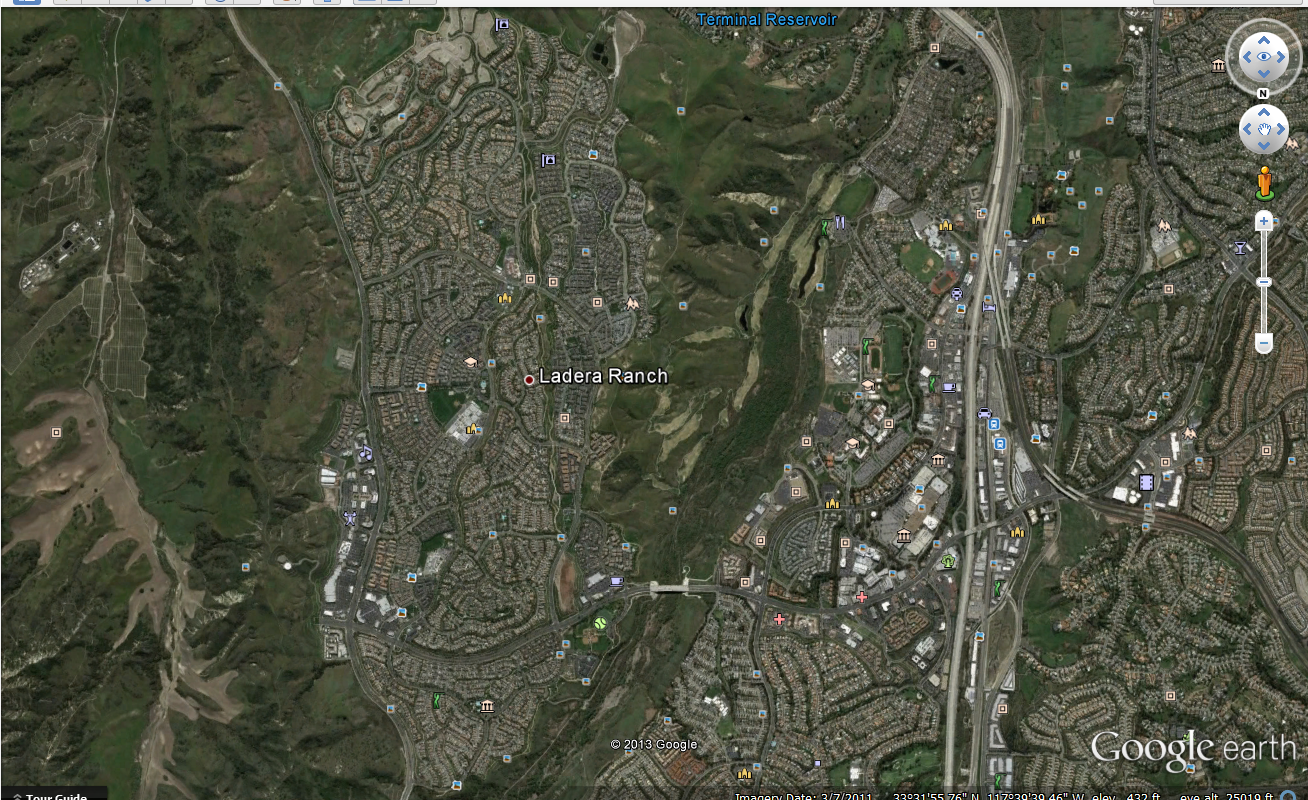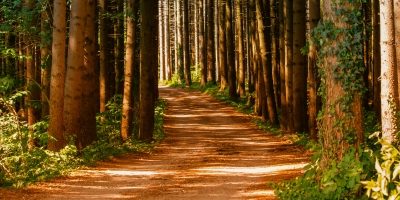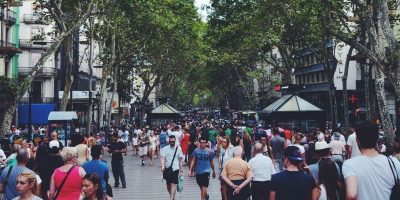
Thirty years ago my family lived in Lake Forest (formerly El Toro), southern California. I recall how much I enjoyed the view from the parking lot of the LDS Chapel (see photo), then on the outskirts of the city of Mission Viejo. The parking lot was elevated so the surrounding views looked even more spectacular. To the south (top of photo) and east (left of photo) were prestine, rolling hills, with native vegetation and landscape that changed colors with the seasons as far as the eye could see. I imagined it looked similar to when the mission padres traveled up and down the California coast over 200 years ago. It was beautiful. On occasion I would ask myself what this will look like in 20 or 30 years. The road to the immediate east (left of photo) was not there at the time. It was as if this builidng marked where nature ended and man began.
A lot has happened in thirty years. My children are grown and busy with their careers in different time zones. They have children of their own who remind us why it is such a joy to be grandparents. My wife and I now live far from our Lake Forest home, residing in Central Florida. I have had the occasion to return to southern California to attend family funerals. While there I took the time to return to the Mission Viejo LDS Chapel (see red circle in next photo). What I saw shocked me. What once was on the edge of civilization, was now surrounded by “growth”. A Home Depot now resides to the immediate east separated by a road that did not exist 30 years ago. Not too much further east is an entirely new suburb, “Ladera Ranch” compressed into a small valley (see photo). The green space between Ladera Ranch and the LDS Chapel is a flood plain.

Ladera Ranch wasn’t there 30 years ago! Not only is the view from the LDS parking lot spoiled, but the resulting development reflects the traditional building style of “rackim, packim, and stackim”. As architetects, we have allowed the dollar-driven parade to pass us by for generations, without protest. We have watched from curbside as more of so-called growth divide us as a community, as a society, and as a nation. The bar for acceptable, balanced growth and development must be raised higher than what got us to where we are. The physical evidence is overwhelming. The individual and societal fallout are undeniable. Town after town and comminity after community have been vitimized by the low bidder mentality. It’s time to establish a better baseline for living, a more comprehensive master planning effort that takes into consideration a balance combination of environment, community, and family, to assure a more healthy and positive future that inspires the good in all of us. A place where who we are inside matters most. Architects have a professional obligation to promote a more balanced way of living that is sustainalbe. That is Sustainable Archtiecture.
We are living in a fascinating time of transition and change that has as much significance as the beginning of the Industrial Revolution. It was a revolution of change that brought us countless wonderful inventions that improved our lives immeasurably. With this change came the explosive need for carbon based fuels to sustain us. Fuels of every kind have been, and still are being extracted from the earth. The environmental scars left from this exhaustive process are too numerous to count. The damage has been done.
We are now faced with another revolution, a revolution of change from taditional non-sustainable development, to a new way of building that balances the natural environment with the virtures of a synergistic community, inspiring the best in each of us. We can do this!
Who’s with me?









